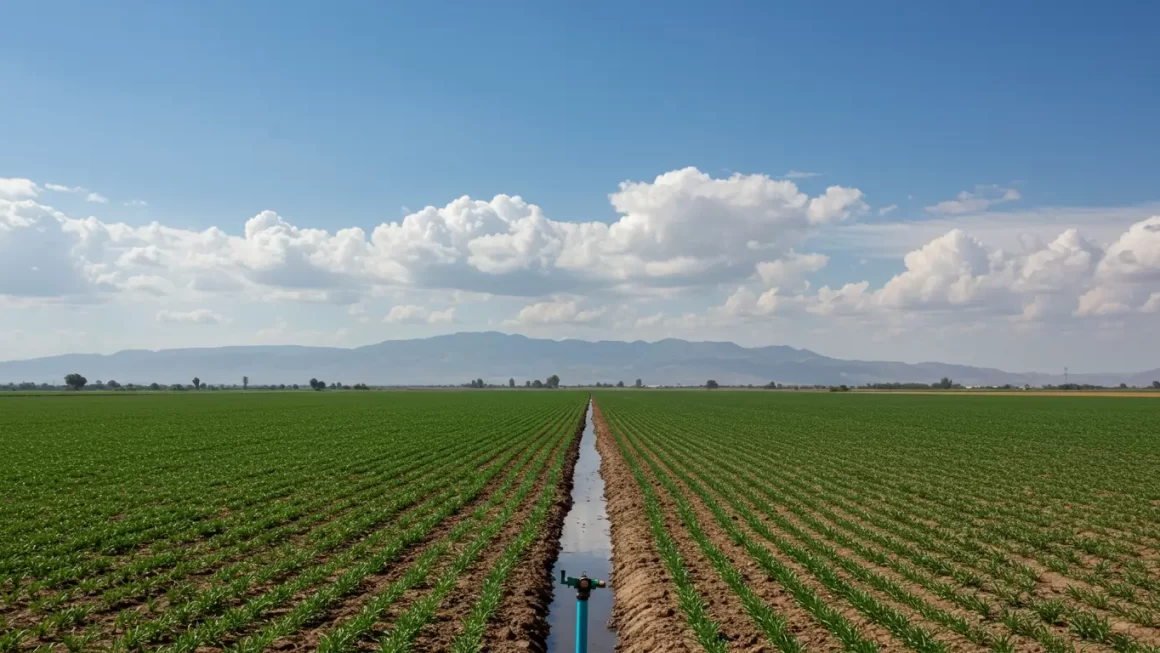Table of Contents
What is AZMIP?
AZMIP stands for Agricultural Zone Management and Irrigation Program, a strategic initiative aimed at improving agricultural productivity and sustainability through advanced zone-based planning and efficient water resource management. The program typically focuses on areas where agriculture is a primary economic driver but faces challenges like water scarcity, soil degradation, and unpredictable climate conditions. AZMIP brings together government agencies, local communities, agricultural experts, and environmental scientists to coordinate land and water use in ways that optimize crop yields and conserve vital resources.
The primary goal of AZMIP is to promote sustainable agriculture by integrating modern irrigation techniques, precision farming, and policy-driven land management. It aims to empower farmers by providing them with the tools and knowledge they need to succeed in a rapidly changing climate. The program often includes the installation of infrastructure such as drip irrigation systems, the use of satellite and drone data for monitoring crop health, and the development of community-based water user associations. This holistic approach not only boosts food security but also enhances livelihoods in rural communities.
Objectives and Scope of AZMIP
The scope of AZMIP is broad and multifaceted, addressing both immediate agricultural needs and long-term environmental sustainability. One of its central objectives is to reduce the inefficiencies in water usage by replacing outdated irrigation systems with smarter, more adaptive technologies. By doing so, the program helps mitigate the over-extraction of groundwater and ensures that water is distributed more equitably among different farming zones. Another key objective is to map agricultural zones based on soil quality, water availability, and climate patterns, enabling the development of customized cropping plans.
Moreover, AZMIP supports capacity building through farmer training programs, research partnerships with agricultural universities, and the establishment of extension services that provide on-ground support to farmers. These efforts help bridge the gap between traditional farming practices and modern scientific approaches. The initiative often works in tandem with regional development goals and may be backed by international donors or NGOs focused on climate adaptation, food security, and poverty alleviation.
AZMIP’s Role in Climate Resilience
In many developing regions, the agricultural sector is highly vulnerable to climate change. AZMIP plays a crucial role in strengthening the resilience of rural farming communities by promoting adaptive techniques and introducing risk mitigation strategies. For example, the program may introduce drought-tolerant crop varieties or develop contingency irrigation plans to manage unexpected weather events. By incorporating climate forecasting tools and real-time data analysis, AZMIP allows for proactive responses rather than reactive damage control.
The program also works to restore degraded lands and protect natural ecosystems, which are essential for long-term agricultural productivity. Through integrated watershed management and the promotion of agroforestry, AZMIP not only supports crop production but also enhances biodiversity and carbon sequestration. These practices are critical in buffering rural economies against the shocks of climate variability, making AZMIP a key player in sustainable rural development.
Technological Innovations in AZMIP
One of AZMIP’s standout features is its emphasis on technology-driven solutions. Remote sensing, GIS mapping, and data analytics are used extensively to monitor land use, crop growth, and water consumption across agricultural zones. These technologies enable precise decision-making, allowing farmers and policymakers to allocate resources more effectively. Mobile applications and cloud-based dashboards are often developed to give farmers real-time updates on weather, irrigation schedules, and pest threats.
Smart irrigation systems, such as those that adjust water flow based on soil moisture sensors or weather forecasts, are also integrated into AZMIP’s toolkit. These innovations significantly reduce water waste and improve yields by delivering water exactly when and where it’s needed. In some areas, solar-powered pumps and automated water gates have been introduced to further modernize irrigation infrastructure while lowering energy costs and environmental impact.
Community Participation and Social Impact
Community involvement is at the heart of AZMIP’s success. The program actively engages local farmers, especially women and marginalized groups, in the planning and decision-making processes. This inclusive approach not only ensures that interventions are culturally appropriate and locally accepted but also helps build a sense of ownership and accountability among beneficiaries. Farmer cooperatives and water user associations are often formed under AZMIP to manage shared resources and resolve conflicts.
Beyond agricultural improvements, AZMIP contributes to broader social outcomes. Increased farm productivity leads to higher incomes, better nutrition, and improved access to education and healthcare. The program often collaborates with social development agencies to address gender inequality and promote youth involvement in farming. As such, AZMIP is not just an agricultural project—it is a catalyst for rural empowerment and social transformation.
Funding and Partnerships
AZMIP typically relies on a mix of public funding, international aid, and private sector investment. Government ministries, especially those overseeing agriculture, environment, and water resources, play a leading role in policy development and infrastructure funding. At the same time, global organizations such as the World Bank, FAO, or regional development banks often provide financial and technical assistance. Public-private partnerships are also encouraged to scale innovations and bring market-based solutions to rural areas.
Research institutions and NGOs are critical partners in the program, offering expertise in agronomy, water engineering, and rural sociology. These partnerships ensure that AZMIP remains grounded in scientific evidence while being responsive to on-the-ground realities. Continuous monitoring and evaluation are integral parts of the funding process, ensuring transparency, accountability, and continuous improvement.
Challenges Facing AZMIP
Despite its many benefits, AZMIP faces a range of challenges. These include limited access to capital among smallholder farmers, resistance to change from traditional farming communities, and the high initial costs of technological upgrades like gadgetfreeks.com. Political instability, bureaucratic delays, and land tenure disputes can also hinder implementation, especially in regions with weak governance structures. Ensuring long-term sustainability requires continuous funding, policy support, and community engagement.
Another pressing challenge is data accessibility and literacy. While technology is a cornerstone of AZMIP, not all farmers have the skills or tools to interpret and act on the information provided. Bridging this digital divide is essential for equitable program success. Training, mentorship, and user-friendly platforms are key to making the benefits of AZMIP truly inclusive.
Also Read: Interactive Advisory Software: A Guide to Streamlining 2025
Success Stories and Impact
In regions where AZMIP has been successfully implemented, results have been impressive. Crop yields have increased by up to 30–50%, water usage has dropped by as much as 40%, and farmer incomes have significantly improved. In some pilot areas, AZMIP has even reversed rural-urban migration trends by making farming more profitable and attractive to youth. These successes demonstrate the program’s potential as a model for sustainable rural development worldwide.
One notable case study involves a dryland farming region where AZMIP introduced climate-smart irrigation and trained women farmers in crop diversification techniques. Within three years, household incomes doubled, and local markets became more stable due to consistent supply. Such examples underscore the power of integrated, community-focused development initiatives like AZMIP.
Future Prospects and Scaling Potential
Looking ahead, AZMIP is poised to expand its reach and deepen its impact. As climate change continues to threaten food security and water availability, demand for zone-based, sustainable agricultural systems is expected to grow. Scaling AZMIP will involve not only replicating successful models but also tailoring them to different ecological and social contexts. Digital platforms and open data systems will play a critical role in facilitating this scalability.
Future enhancements may also include incorporating artificial intelligence for crop modeling, blockchain for traceable food supply chains, and regenerative agriculture practices that go beyond sustainability to actively restore ecosystems. With the right investment and policy alignment, AZMIP could become a cornerstone of climate-resilient agriculture and rural revitalization in the 21st century.
Final Thoughts
AZMIP represents a visionary approach to managing agricultural zones and irrigation systems in a way that balances productivity, sustainability, and social equity. Through its focus on technology, community engagement, and environmental stewardship, AZMIP offers a practical roadmap for transforming rural economies and building resilience in the face of global challenges. As more regions adopt similar models, AZMIP’s legacy may well define the future of smart and sustainable agriculture.




